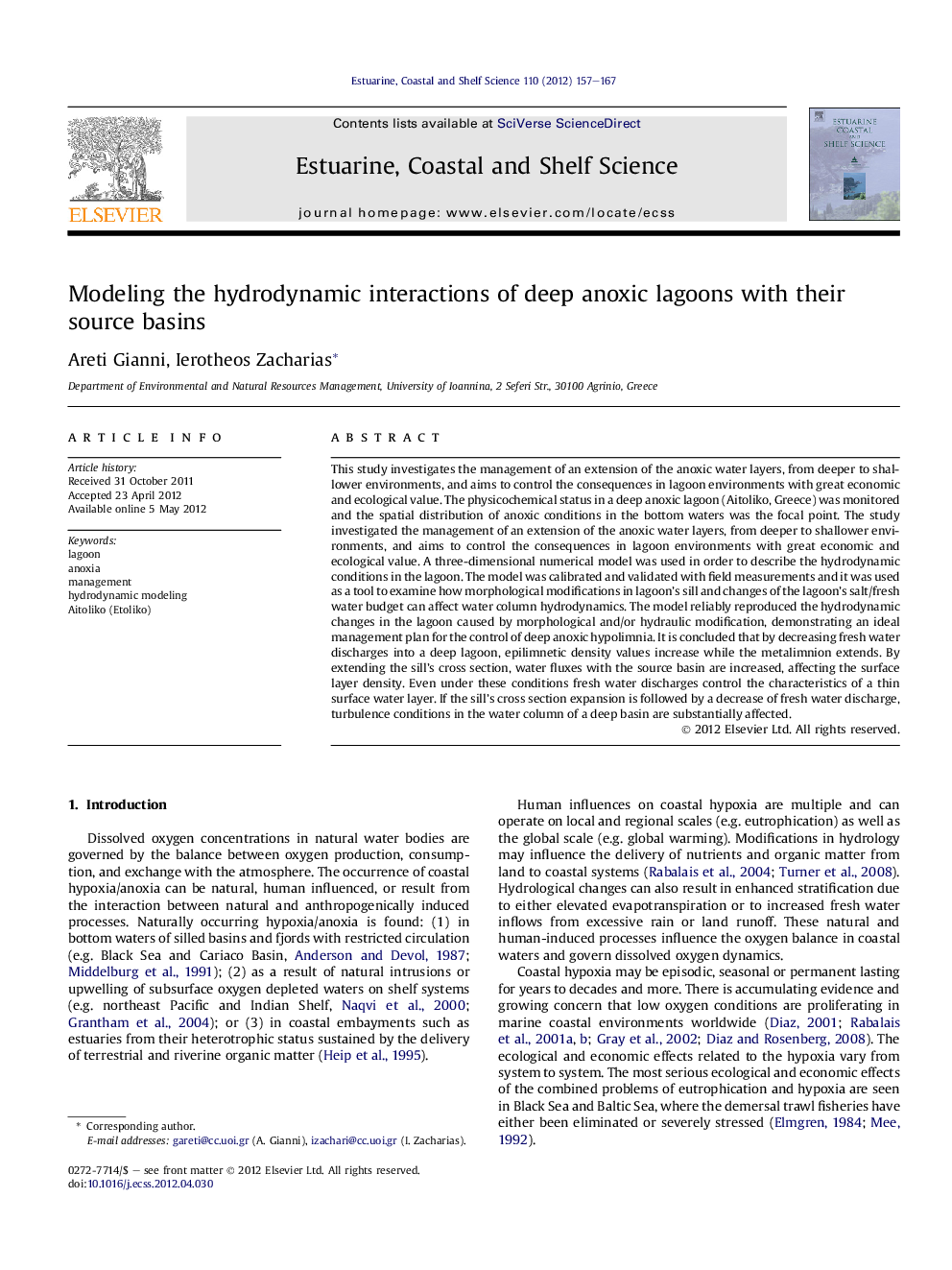| Article ID | Journal | Published Year | Pages | File Type |
|---|---|---|---|---|
| 4540123 | Estuarine, Coastal and Shelf Science | 2012 | 11 Pages |
This study investigates the management of an extension of the anoxic water layers, from deeper to shallower environments, and aims to control the consequences in lagoon environments with great economic and ecological value. The physicochemical status in a deep anoxic lagoon (Aitoliko, Greece) was monitored and the spatial distribution of anoxic conditions in the bottom waters was the focal point. The study investigated the management of an extension of the anoxic water layers, from deeper to shallower environments, and aims to control the consequences in lagoon environments with great economic and ecological value. A three-dimensional numerical model was used in order to describe the hydrodynamic conditions in the lagoon. The model was calibrated and validated with field measurements and it was used as a tool to examine how morphological modifications in lagoon's sill and changes of the lagoon's salt/fresh water budget can affect water column hydrodynamics. The model reliably reproduced the hydrodynamic changes in the lagoon caused by morphological and/or hydraulic modification, demonstrating an ideal management plan for the control of deep anoxic hypolimnia. It is concluded that by decreasing fresh water discharges into a deep lagoon, epilimnetic density values increase while the metalimnion extends. By extending the sill's cross section, water fluxes with the source basin are increased, affecting the surface layer density. Even under these conditions fresh water discharges control the characteristics of a thin surface water layer. If the sill's cross section expansion is followed by a decrease of fresh water discharge, turbulence conditions in the water column of a deep basin are substantially affected.
